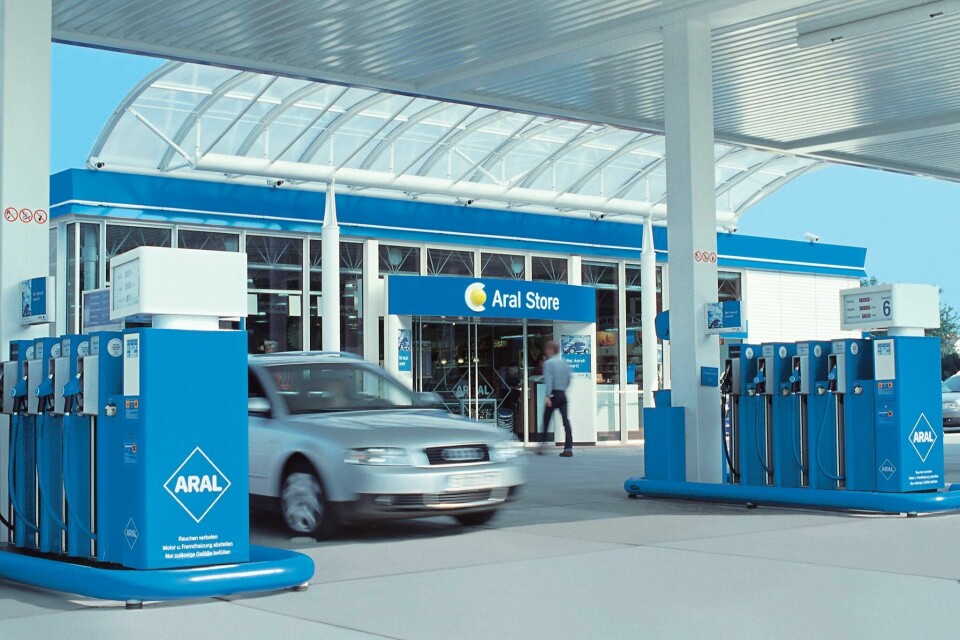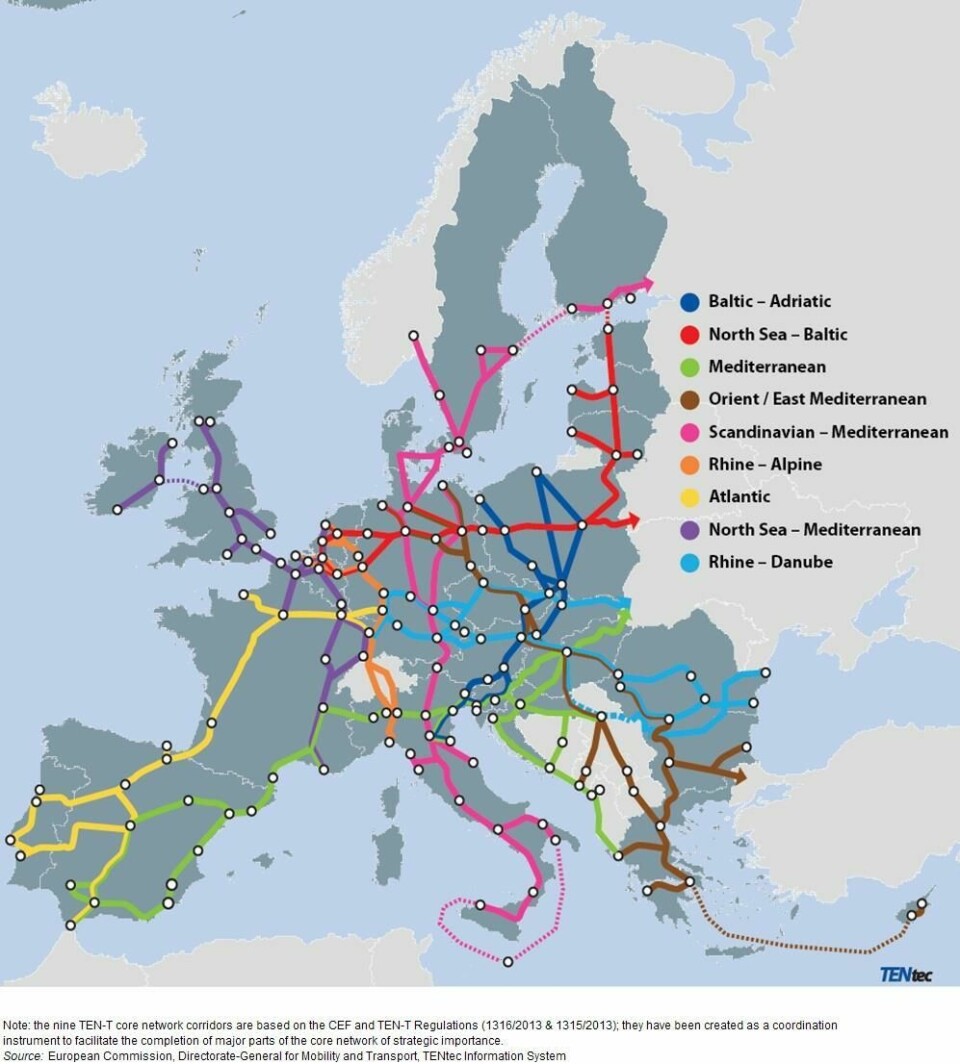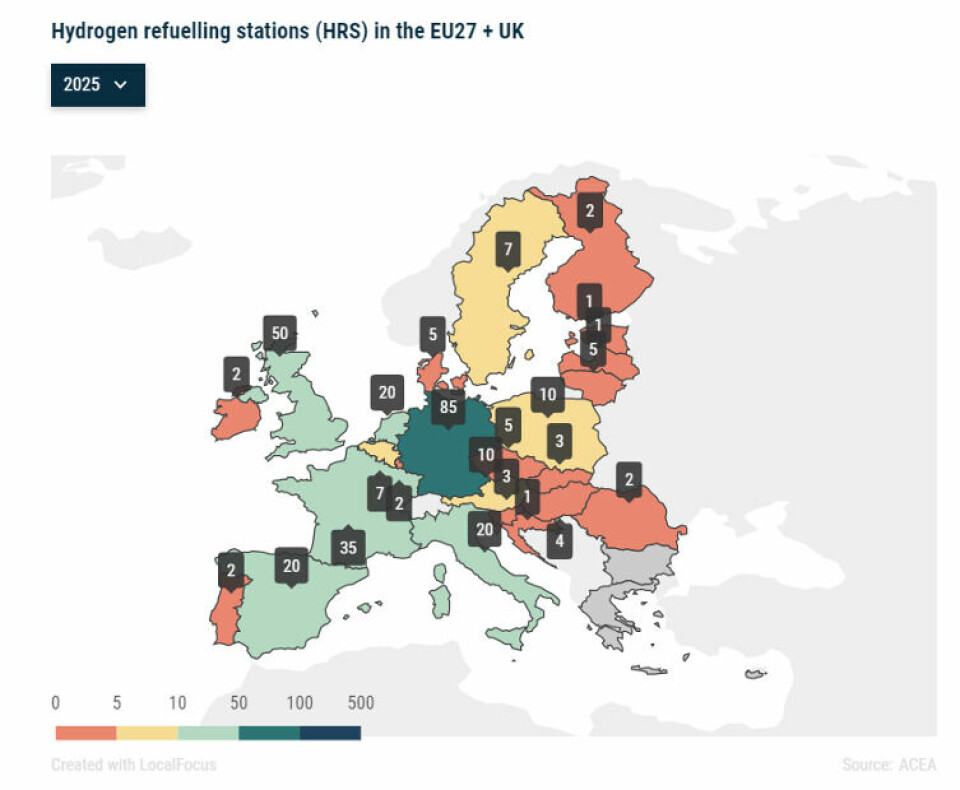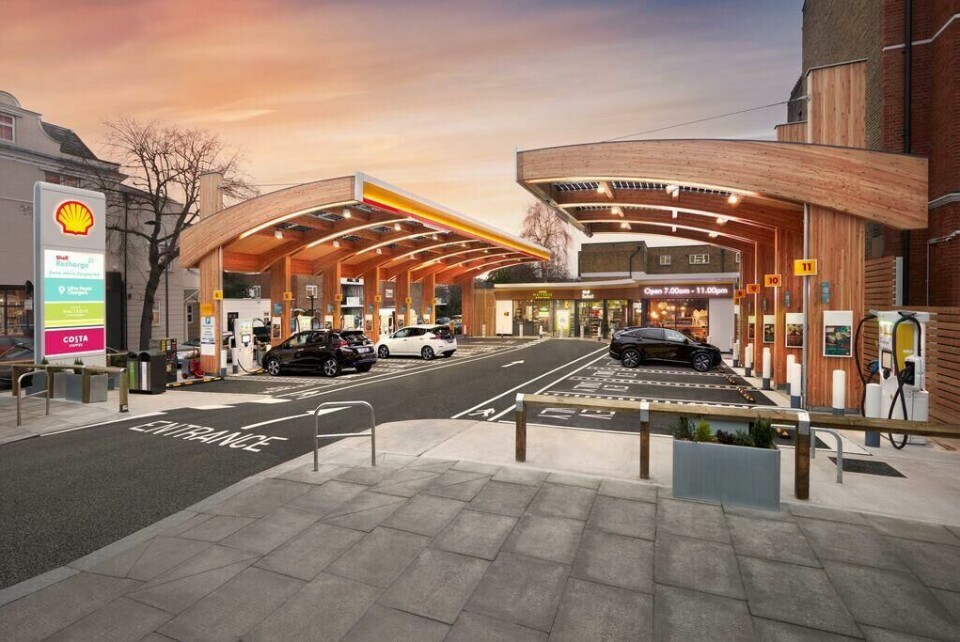Europe’s electric future cannot be free of charge
Carmakers in Europe are working against the clock to ensure they meet regulations on vehicle emissions by 2030, mainly through the electrification of the vehicles they make. However, those efforts are contingent upon there being an adequate charging infrastructure in place. Namrita Chow assesses the state of play

Fit for 55 is the European Union’s plan to reduce greenhouse gas emissions by 55% across the region by 2030.
Those emission cuts include those produced by the automotive industry and the vehicles it makes. The plan culminates in a complete ban on vehicles driven by an internal combustion engine (ICE) by 2035. Many other global nation states will also ban ICE sales in the 2030-2040 timeframe. OEMs have seen the writing on the wall and have made similar statements about ending ICE production over a similar timescale.
The big question underlying these good intentions is, can the charging infrastructure keep pace with the growth in EV sales?
A long way off target
The European Commission aims to have in place 1m electric recharging points by 2030 (originally the target for 2025) across the EU and including the UK. It also intends to have 500 hydrogen recharging stations in place by that date. However, the Commission’s own Impact Assessment has highlighted the need for over 3m electric recharging points by 2030. The European Court of Auditors (ECA) highlights in its report Infrastructure for charging electric cars is too sparse in the EU that: “The EU is still a long way off its Green Deal target of 1m charging points by 2025.”
The EU’s Green Deal refers to an estimated 13m zero and low-emission vehicles (ZLEV) on Europe’s roads by 2025. Meanwhile, the Commission’s Smart Mobility Strategy forecasts that there will be 30m zero emission vehicles on the road in Europe by 2030, with a largely zero-emission vehicle fleet by 2050. Given the ban of fossil fuel cars from 2030 in a host of European countries such as Denmark, Ireland, Netherlands, Slovenia and Sweden, it is imperative that there is adequate infrastructure to support the shift away from ICE vehicles. Without the requisite charging infrastructure, all these electrification targets will be impossible to reach and will be in vain. Meanwhile, outside the EU, it is Norway forging ahead with aims to have all new passenger cars and light vans to be zero-emission as early as 2025.
Table 1: Number of electric charging points needed in the EU and UK
The bulk of the alternative fuel infrastructure needed is for electric vehicle (EV) recharging, which means focusing first on the EV charging infrastructure across the EU and UK.
As indicated, the EU’s Green Deal target of 1m charging points by 2025 will now not be met but instead pushed to 2030. The ECA recommends that to meet that goal the Commission needs to develop 150,000 new charging points each year, around 3,000 a week.
The Commission’s spokesperson clarified its target: “The aim is to build half of the 1,000 hydrogen stations and 1m out of 3m public recharging points needed by 2030.”
The charging infrastructure gap
Data released by the European Alternative Fuel Observatory (EAFO) show that there were just 250,000 electric charging points in Europe in 2020. Therefore, Europe needs 750,000 charging points to be built between 2020 and 2025 just to facilitate the ZLEV cars on the roads, according to the prognosis by the European Court of Auditors (ECA). That’s 150,000 each year, or approximately 3,000 per week. The big question is, are 3,000 new charging points being installed a week across Europe?
As stated, the EU’s current target is to reach 1m by 2030, that means 750,000 stretched over a longer time frame of ten years. This means 75,000 a year, which is 1,442 a week. Are either of these targets are being met?
To answer that requires the examination of initiatives both by private and public sectors, and indeed combinations of the two, to ascertain if Europe is on the right track to be able to charge the EVs on its roads in the near future.
Funding from the public sector
The EU has in place directives to help accelerate the development of charging infrastructure across Europe, with funds available.
While the vast majority of recharging points will be electric and for light vehicles, the plans under the latest Alternative Fuel Infrastructure Facility (AFIF) also include hydrogen and liquified natural gas (LNG), with combinations of hydrogen and electric recharging spots as well. The AFIF directive also includes provision for heavy goods vehicles and the maritime sector.
These plans under the AFIF are to further strengthen recharging spots along the Trans European Transport Network (TEN-T), with an allocated €1.5 billion under the latest Connecting Europe Facility 2.0 (CEF) for the 2021-2027 timeframe. This amount is to concentrate on the nine Core Network Corridors across Europe. Already €34m has been invested in Europe’s alternative fuel-charging infrastructure in the period up to 2020 by the previous CEF round.
The funds laid out by the AFIF seek to remove the current disparity of charging infrastructure across member states by allocating a portion of the money to certain countries, otherwise known as the ‘cohesion countries’. The Cohesion Fund was set up in 1994 and provides funding for environmental and trans-European network projects in the Member States whose gross national income per capita is less than 90% of the EU average.
By the end of 2020 there was considerable disparity across Europe, with some considerably short of their country-specific National Planning Frameworks (NPF) for charging infrastructure. The highest density of public charging infrastructure is currently in western Europe and the lowest density in central and eastern Europe.
For example, of the EU27 countries, Germany, France and the Netherlands together account for 69% of all charging points. Without adequate charging infrastructure across the EU, issues such as range anxiety will dominate and diminish any prospect of a hassle free zero-emission car journey across east and western Europe.
The AFIF, therefore, has allocated money for the cohesion countries, those being: Bulgaria, Czechia, Estonia, Greece, Croatia, Cyprus, Latvia, Lithuania, Hungary, Malta, Poland, Portugal, Romania, Slovakia and Slovenia. There are separate funds allocated under standard EU-wide funding.
To reach the 1m electric charging points by 2030, plus facilities to strengthen LNG and hydrogen infrastructure, the AFIF funds will help facilitate charging spots to address the following:
- · Roll out of electricity fast-charging infrastructure
- · LNG bunkering for TEN-T maritime and inland port
- · Hydrogen re-fuelling infrastructure with priority for long-haul and public transport
- Hydrogen re-fuelling and electricity recharging infrastructure for heavy-duty vehicles
- Deployment of alternative fuels at TEN-T maritime ports, inland waterways, inland ports and airports.
AFIF calls or tenders are currently open, with multiple cut off dates between January 2022 and September 2023. Funds are allocated under zero-emission recharging facilities. That includes projects related to electricity recharging infrastructure and hydrogen refuelling infrastructure. Around €400m is allocated under the general envelope of funding and €250m under the cohesion envelope.
Further funds are allocated under low-emission recharging facilities, which include LNG refuelling infrastructure. €125m has been allocated for the cohesion envelope and €400m in the general envelope.
To understand this in more detail it is necessary to look at the picture today for hydrogen and LNG refuelling facilities.

Hydrogen refuelling network
By 2030 the European Automobile Manufacturers’ Association (Acea) states that 60,000 hydrogen fuel cell trucks are expected to be in operation across Europe. By 2025 there should be 300 hydrogen refuelling stations suitable for trucks, and 1,000 by 2030. These should be positioned every 200 kilometres along the TEN-T core network by 2030. However, under the Fit for 55 package, the recommendation is for hydrogen refuelling stations at 150km intervals along the TEN-T core network.
By 2030 the number of hydrogen refuelling stations needed by trucks jumps considerably per EU and UK country as can be seen in Figure 5. The big lurking question is whether this target will be met.
By the end of 2020 there were 200 hydrogen refuelling stations across Europe, of which the majority are in Germany, while France has 34 with a further 38 in the pipeline. There area further 23 are in the Netherlands as per data collated by energy consulting company Ludwig-Bölklow-Systemtechnik under its H2 Stations platform. “I can confirm that Germany has already 101 H2 stations, but not all are public, only 91,” said Evi Pschorr-Schoberer, project manager at the company.
While this does tell us that there has been a surge in development of H2 infrastructure, these are not compatible with all road transport types and some are private. A hydrogen refuelling station for trucks needs a minimum daily capacity of at least six tonnes of H2 with at least two dispensers per station.
According to Acea, as of their research conducted in 2021, there are no hydrogen refuelling stations in the EU compatible with the requirements of the heavy goods vehicle (HGV) sector. The only place in the region that does have some hydrogen infrastructure for trucks is Switzerland and that does not fall within the EU.
Table 2: Publicly accessible refuelling stations for HGVs (EU27 +UK)
Gas alternatives on land and sea
As of the end of 2021 there are just 400 LNG recharging stations across the EU27 + UK for road transport. By 2030, Acea notes that there would need to be at least 1,500 at least, specifically for the heavy truck sector. These must be publicly accessible. In 2020 there were a total of 332 LNG refuelling points in the EU, serving 6,000 LNG trucks.
For the maritime sector LNG is of growing importance. By the beginning of 2021 around 50 inland and maritime ports in the EU had at least one onshore power system (OPS). Europe aims to expand the charging infrastructure with €3.4 billion to be allocated to LNG bunkering.

The last round of EU funding under the CEF for the 2014-2020 timeframe mobilised the roll out of 20,450 recharging and refuelling points across Europe. These included:
· 19,236 EV recharging points
· 130 hydrogen refuelling points
· 1,050 road liquified and compressed natural gas (CNG) refuelling points: 809 CNG and 241 LNG
· 34 LNG refuelling points/OPS for ships (7 inland and 27 maritime ports).
In total, therefore, there were 20,450 recharging/refuelling points in Europe for the transport sector co-funded by CEF. Even if we estimate an additional number of new charging stations co-funded under the new alternative fuel infrastructure funding, will this be enough?
In terms of the electric charging infrastructure, energy provider Shell aims to operate 500,000 charging points across Europe by 2025. To meet this the company has been on a buying spree. It is also pushing access across charging network providers in Europe, in addition to converting a gas station entirely to electric vehicle charging in UK. Shell is also adding charging points in the forecourts of its gas stations. Some more specific examples of how Shell aims to meet its target are referenced below.
· In 2017 Shell bought NewMotion, which will rebrand as Shell Recharge, providing access to the public network of 200,000 public charge points across 35 countries. Via either NewMotion or Shell Recharge cards, members can access electric charge points across Europe from a variety of providers:
- BeCharge (Italy) 3,800
- Wenea (Spain) 320
- Spirii (Denmark) 580
- Mobi.E network (Portugal) 3,700
- OAMTC Betriebe Gmbh (Austria) 104
- Volkswagen Group Charging (Germany) 1,000
- Wirelane (Germany) 180
- Enel X Mobility (Italy) 10,400
- Be Smart (Italy) 84
- Hera Comm(Italy) 286
- Ultra Fast Charging Scandinavia (Nordic region) 64
- Renovatio e-charge (Romania) 304
- Gronn Kontakt now Mer (UK) 200
- Ubitricity (UK) 4,000
· In September 2021, Shell announced a new ambition to install 50,000 on-street Ubitricity charge points in the UK by 2025.
- Shell is also aiming to install up to 800 electric vehicle charging points in as many as 100 Waitrose shops across the UK by 2025. Each site is expected to have six 22kW and two 50kW charge points installed, enabling customers to charge up while they shop. These new charging points will help the Shell achieve its ambition to grow the Shell Recharge-branded network to 5,000 EV charge points on forecourts and in other locations by 2025.
- In the UK, Shell currently provides customers with access to a public charging network of nearly 8,000 EV charging points. This includes over 110 Shell Recharge charge points on Shell forecourts, access to a public charging network of nearly 4,000 EV charge points via Shell owned NewMotion, and access to nearly 4,000 EV charge points via Shell owned Ubitricity, which utilises existing lamp posts.
Shell’s rival BP has its own targets to have 100,000 charging points worldwide by 2030[1]. In February the company said that it was focused on fast and on-the-go charging. “[A]lmost half BP’s current network is fast or ultra-fast – and on fleets, BP is aiming to increase the energy sold across its EV charging networks 100-fold from 2019 to 2030,” said the company in a statement. This bears testament to BP’s fast electric vehicle chargers becoming profitable. This is a major milestone as it allows the energy giant to consider making greater strides in offering more electric charging outlets. BP’s EV-charging business are now expected to turn profitable from 2025.
Furthermore, BP also said it expects to generate earnings of between $9-10 billion (€7.8-€8.7 billion) by 2030 driven by five transition growth businesses, which includes EV charging, renewables, hydrogen, bioenergy and convenience.
The company focused solely on fast DC charging (50 to 150 kW range). BP Pulse is the network of 8,000 fast charging BP charge points in the UK and includes the companies BP Chargemaster and Polar. In Germany, BP’s subsidiary Aral Pulse has installed 500 EV charging facilities at BP gas stations.
There are a number of other private electric charging companies in Europe that have targets to grow their individual points. Fastned, for example, aims to develop 1,000 fast charging stations in Europe by 2030, powered themselves by renewable energy. However, acquiring new land for building charging stations along the much highlighted TEN-T core network corridors is not easy, and the majority of charging stations will inevitably have to be within the forecourts of existing gasoline and diesel service stations. These prime locations are owned by the likes of BP and Shell, and thus they hold the key to transforming the landscape. While Fastned has been capable of accessing some land via open bidding for public and privately operated land along the traffic corridors between the Netherlands, Switzerland and France, the potential to gain the volume needed falls back to the major gas suppliers. And for them it is profitability that remains core to the cost-benefit analysis of shifting to a completely electric charging infrastructure by 2050.

Total number of EV charging points in Europe
The EAFO has collated the current volume of EV charging points across Europe. These are publicly accessible EV charging points, comprised of fast and normal charging points, and include those funded by governments, private companies and public-private partnerships. As of the end of 2021 the total number in the EU was just 319, 271, with the UK adding a further 42,345. That’s a total of just 361,616. So, to reach 1m by 2025 and over 3m by 2030, which is what is needed for a smooth transition to a largely electric fleet by 2050, the region needs to get charging, rapidly.
Part of the solution to help achieve the phasing out of ICE vehicles in favour of EVs is for the large conglomerates with major existing petrol and diesel charging infrastructure to increase the electric charging services offered at their strategically positioned locations. As Acea has pointed out, it is imperative that these charging points are not solely for passenger and light vehicles, but for the commercial road transport network too. Similarly, it is these large service stations that are already positioned along major highways, which will have to be the main starting point for the move to other alternative fuels such as hydrogen and LNG. However, each of these premises, with a variety of alternative fuel offerings, need themselves to come with strict protocols and strong warnings of safety as the potentially lethal combination of natural gas, hydrogen and electricity raises the spectre of a repeat of the Hindenburg disaster.
Consumers are the final piece needed to complete the jigsaw. Europe will need more private chargers installed in company parking spaces and public carparks. There will also need to be a wider rollout of personal home chargers.
Ultimately, successfully installing an adequate EV charging infrastructure across Europe will have to be a multi-agency, multinational effort at the public, private and personal level. The vital importance of an EV charging infrastructure to continued investment in EV production is evinced in the moves being made by such as Tesla, BMW, Ford, GM, Daimler and Hyundai Kia amongst many others, directly or through partnerships, to get involved in setting up the infrastructure needed.





